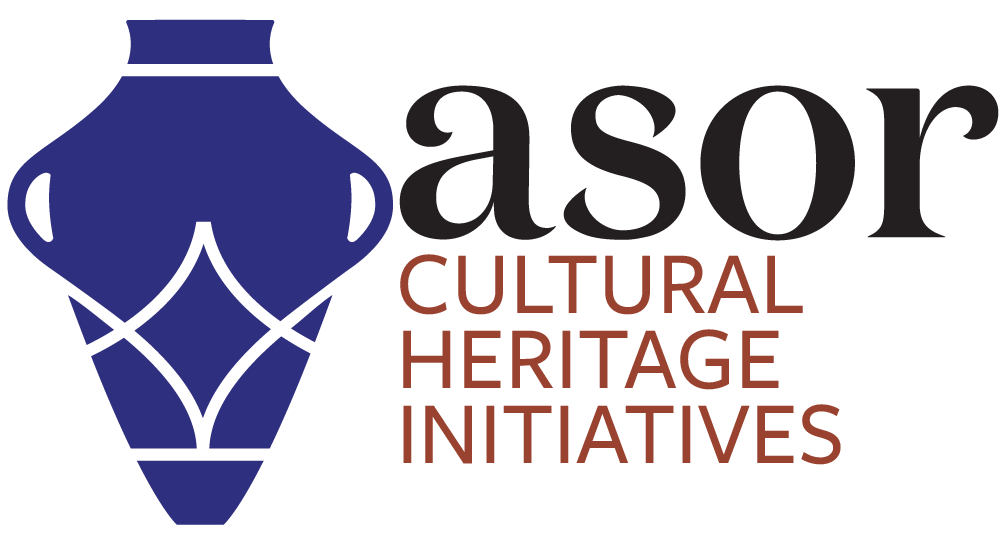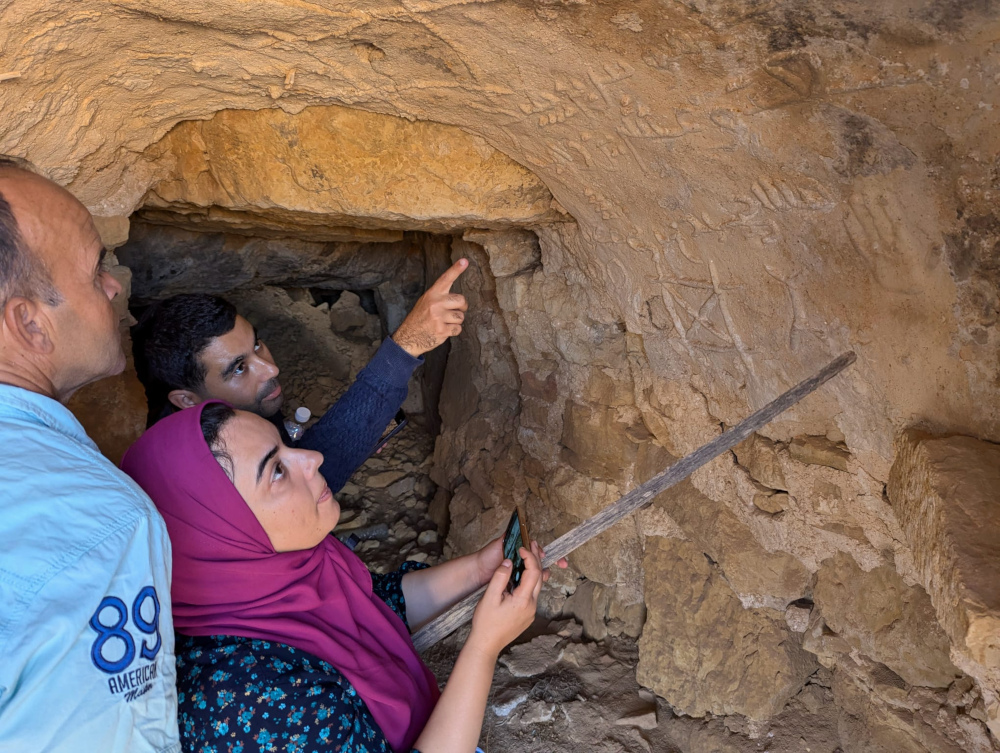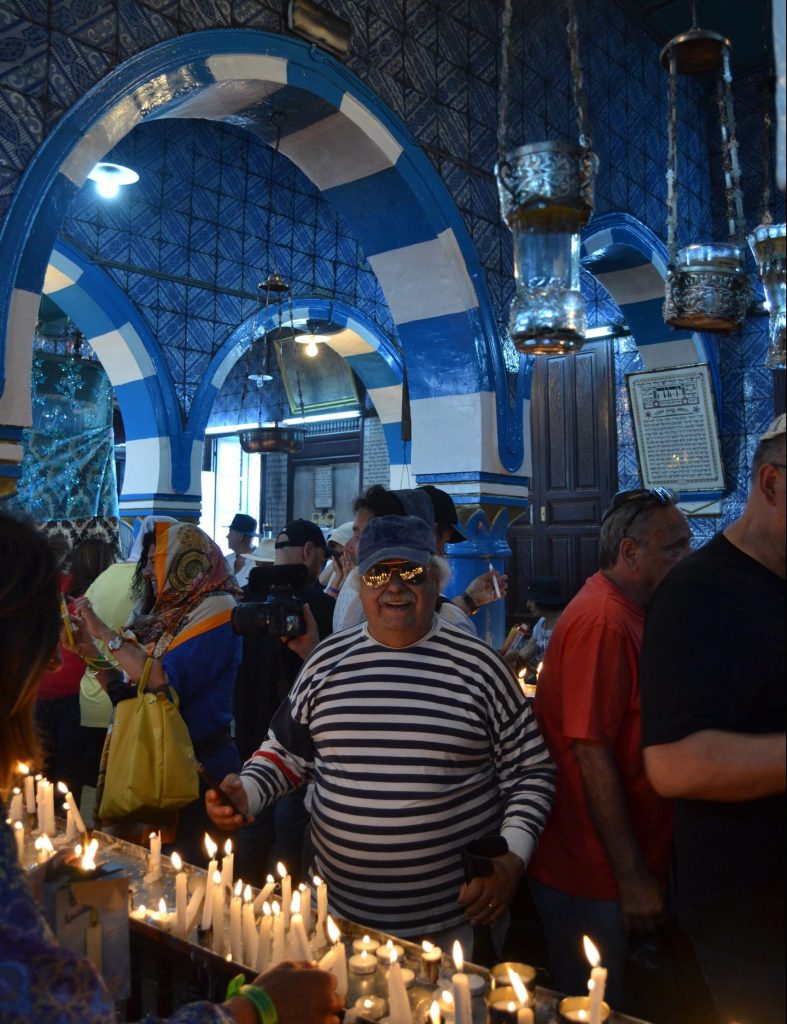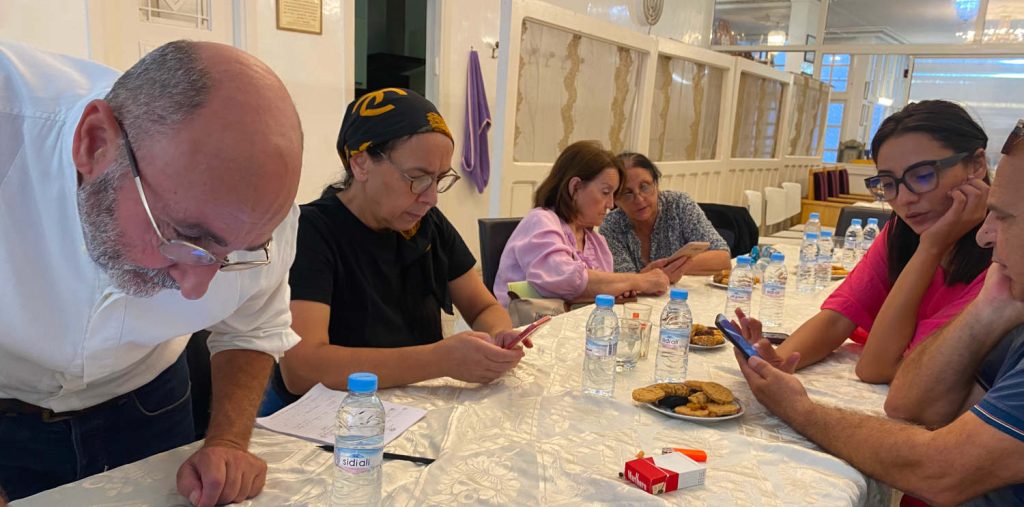

Heritage Advocacy in North Africa: ASOR’s Project By the Numbers and Photos
July 15, 2025 | by ASOR Staff
This post is the first in a series on projects completed by ASOR’s Cultural Heritage Initiatives through support from public and private sources. The goal of this series is to provide a project-specific overview of activities and outcomes achieved by ASOR CHI and its partners.
The “Heritage Advocacy in North Africa” project ran from August 2021 until September 2023 with support from an anonymous donor. The goal of the project was to promote cultural and religious freedom through heritage protection and advocacy in Morocco and Tunisia. This goal was grounded in the belief that involving people of all backgrounds in the active protection of ethnic and religious minority heritage could help strengthen relationships between communities and contribute to building more resilient societies.
To achieve this goal, the project pursued three inter-related objectives that focused on (i) training members of minority communities in heritage documentation and outreach; (ii) strengthening collaboration between local government and community members on heritage protection; and (iii) supporting interfaith and intercommunal cooperation and dialogue through practical activities to protect heritage. By the end of this two-year project, ASOR and its partners had reached, and regularly exceeded, all of the project’s objectives, involving nearly 1,000 individuals in discussions and actions to protect heritage and documenting more than 675 minority heritage sites. The community connections and lessons learned from the “Heritage Advocacy in North Africa” project have continued to support heritage protection and advocacy in the region, and have contributed to a subsequent project in the Sahel that will be the topic of a separate post.
By the Numbers
Objective 1: Training for Heritage Documentation and Outreach
We began by training community members—especially from minority backgrounds—in the documentation and protection of heritage sites. As part of this training, ASOR developed a series of tutorials for mostly free, open-source software for heritage documentation and promotion. These are freely available on ASOR’s website in Arabic, English, and French (https://www.asor.org/chi/chi-tutorials).
Over the life of the project:
- 129 individuals from religious and ethnic minorities were trained, alongside Sunni Muslims who shared a commitment to pluralism.
- 678 heritage sites were documented, including Jewish synagogues, Amazigh granaries, Ibadi mosques, and Christian cemeteries. Tablets, cameras, and GPS units were provided to our partners to assist with the training and community fieldwork.
- Participants deployed 22 “suitcase museums” and hosted outreach events reaching over 890 community members.
Objective 2: Strengthening Collaboration between Local Government and Community Members on Heritage Protection
Building trust between local communities and government officials in North Africa is complex, but critical. Through the work of the project:
- 409 participants joined facilitated conversations across Tunisia, Morocco, and the broader region.
- 16 civil society organizations actively engaged in advocacy, including minority-focused and interfaith organizations.
- 6 new regional heritage networks were formed to continue cooperation beyond the project’s end.
Objective 3: Supporting Interfaith and Intercommunal Cooperation and Dialogue
One of the project’s lasting successes is how it fostered exchange between different groups through participation in practical examples, a short-term, collaborative activity in support of heritage protection, or through attendance at ASOR’s Annual Meeting. By the end of the project:
- 16 project partners presented at ASOR’s 2022 Annual Meeting.
- 46 new international connections were forged between North African participants and heritage professionals across the U.S., UK, Jordan, Libya, Burkina Faso, and Niger.
- 6 practical examples were completed that advanced interfaith and/or interethnic collaboration.
Heritage in Action
Several stories from the project illustrate how local efforts and global connections can protect and revitalize minority heritage:
Reopening a Jewish Library in Nabeul, Tunisia
In Nabeul, a space closed since 1968 was reopened as a museum and library celebrating Jewish heritage—thanks to crowdfunding and support from both Jewish and non-Jewish Tunisians. More than 100 people attended the opening.
Creating a Heritage Lab in Douiret, Tunisia
The Women’s Collective in Douiret, Tunisia developed a regional “laboratory” for digital heritage documentation with assistance from ASOR. With training and new equipment, they produced more than 100 photogrammetric models and began drafting conservation plans for threatened Amazigh sites. Since this project concluded, the Women’s Collective and ASOR have continued to work together on heritage protection at the site of Douiret through the support of an Ambassador’s Fund for Cultural Preservation grant from the U.S. Department of State.
Protecting a Jewish Cemetery in Soliman, Tunisia
After ASOR and members of Manouba University helped complete the documentation of a Jewish cemetery in Soliman with members of the local community, a nearby business attempted to build over part of it. Thanks to community and legal advocacy—with documentation in hand—the chief rabbi of Tunis agreed to intervene in court to protect the site.
Rediscovering the Jewish Mellahs of Tiznit, Morocco
Throughout this project, our partners identified lesser-known heritage sites that have never been added to the national heritage inventories of Tunisia and Morocco. Our partner Ratiba Rigalma at the University of Ibn Zohr in Agadir, Morocco used our documentation techniques to produce a preliminary study of the rapidly disappearing Jewish mellahs of Tiznit. Her record demonstrates the urgency of such work, as structures inhabited as recently as the 1960’s have crumbled to the point that they resemble an archaeological site.
Looking Forward
While this project has concluded, the work it initiated continues. ASOR has successfully raised non-federal funds to support ongoing initiatives in both countries, and our new networks, trainings, and documentation resources sustain local advocacy efforts. The legacy of this work will endure—in the people trained, the sites documented, and the conversations that continue.



